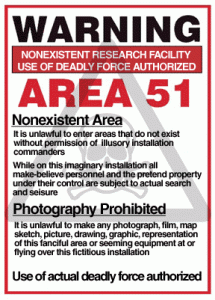The Case For Secret Crags
 We are fortunate here in Western Colorado to have relatively few access issues surrounding our local climbing areas. Thompson Creek is the glaring exception, and that situation continues to stagnate as the BLM takes their sweet time putting together their new resource management plan for public comment. I was talking about the state of affairs out there with a friend the other day, and he wondered out loud if we shouldn’t just go back to the era of secret crags. It got me thinking about the pro’s and con’s of this approach, and today we’re gonna look at the case FOR secret crags.
We are fortunate here in Western Colorado to have relatively few access issues surrounding our local climbing areas. Thompson Creek is the glaring exception, and that situation continues to stagnate as the BLM takes their sweet time putting together their new resource management plan for public comment. I was talking about the state of affairs out there with a friend the other day, and he wondered out loud if we shouldn’t just go back to the era of secret crags. It got me thinking about the pro’s and con’s of this approach, and today we’re gonna look at the case FOR secret crags.
First, to clarify, we’re not talking about an area intentionally kept out of the limelight by a small group of developers, but just something the locals want to keep under wraps. Mill Creek in Moab was this way for a long time, and there are several local spots that fit the bill as well. Perhaps the biggest benefit to this approach, and the source of my friend’s frustration, is the ability to stay off the radar of land managers. When a cliff is “secret,” it’s usually in a place that only climbers go, and only climbers know about it. There is no info on the internet or guidebooks, and if you want to find out about it, you ask around. Such a cliff usually offers a very laid back climbing experience, where you might see a few other folks here and there, and generally have the place to yourself.
The problem is that once a cliff pops up on the radar, who knows what you’ll have to deal with. There might be some special needs birds living on the wall, and even though they have coexisted just fine with climbers for years before anyone got involved, suddenly they need protection, (which usually means shutting down a cliff for 6 months.) Or you could be the victim of an overzealous land manager who just assumes that developing the cliff was illegal, and puts all kinds of draconian restrictions in place, rendering it virtually unusable to the climbing public.
Regardless, there is no question that once the cat is out of the bag, the cliff is way more likely to come under scrutiny. Most of the time this isn’t a big deal, but sometimes it leads to a bad situation for climbers. The other major benefit of a secret cliff is fewer crowds. Most people are lazy, and will only check out a place that’s in a guide, or maybe on Mountain Project. We had several of the local cliffs all to ourselves for a couple years before the guidebook came out, and while I couldn’t be more psyched that lots of folks get to enjoy them now, it was fun feeling like you could go to your own private crag.
So, that’s our take, how do you feel about secret crags? Also, be sure to check back tomorrow when we make the case AGAINST secret areas.
2 Responses to The Case For Secret Crags
Bulldog Creek Dog Walk (IV WI 4+)
Hayden Carpenter and Tom Bohanon recently repeated an obscure ice climb on the south side of Mt Sopris. Given a brief mention in Jack Robert’s ice guide, Bulldog Creek Walk is described as being 100 meters of WI 4. What they found was seven pitches of ice in a remote setting that makes for one […]
Connect with Us















I both love and hate this idea, climbing is ment to be enjoyed and shared. Keeping it a secret stops this. But, I also like my small local crags, ones that only local climbers hit. (hopefully all of them are your friends)
So while I think “secret crags” are awesome, they should never be kept secret. Because that only limits who gets to enjoy the awesome.
I’ll always have my own private climbing areas that are little-known for as long as possible. A few of these eventually became popular, but that got me to bushwhacking further away from the masses and keeps me on the lookout that next honeypot of virgin rock. Fisherman have known for years that the best way to ruin a great fishing hole is to let the other fisherman know about, and stealth climbers understand that tactic applies to private climbing areas.